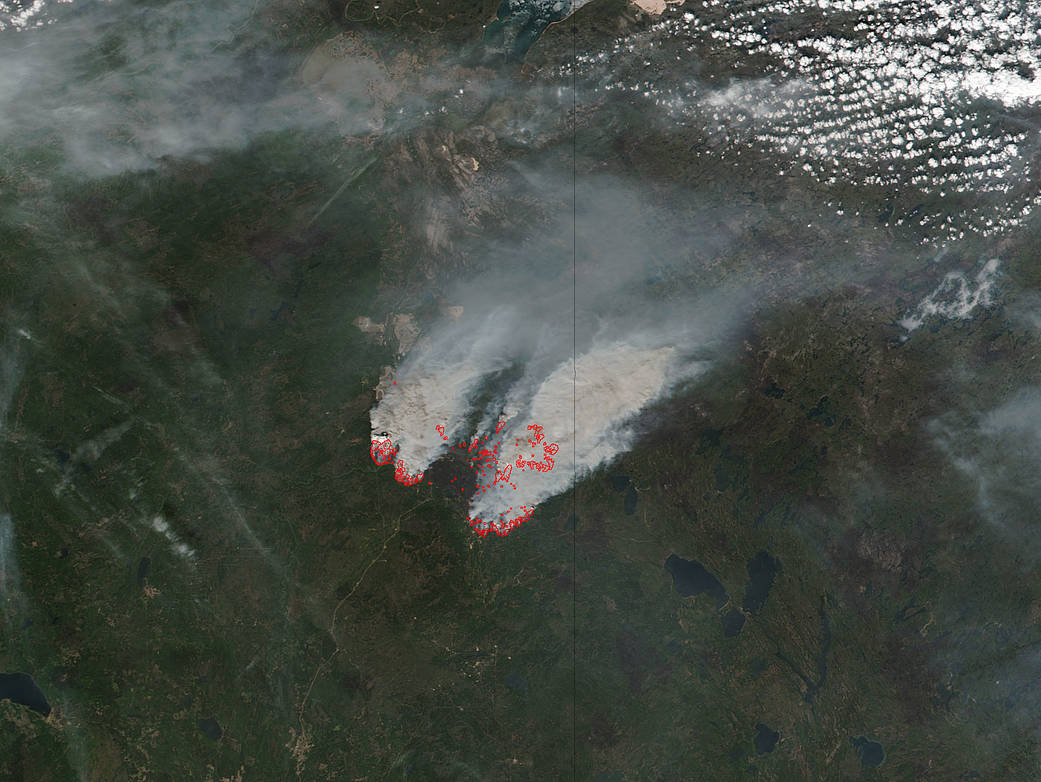
Huge columns of smoke rise up from the myriad of fires in the Fort McMurray complex in Alberta, Canada. NASA’s Suomi NPP satellite collected this natural-color image using the VIIRS (Visible Infrared Imaging Radiometer Suite) instrument on May 16, 2016. The actively burning areas are outlined in red. The fire north of Fort McMurray had retreated and some citizens had returned, but in the last few days this area has been threatened again. On May 15, warnings were issued that the wildfire was moving at 30-40 meters (98-131 feet) per minute to the north again.
The smoke released by any type of fire (forest, brush, crop, structure, tires, waste or wood burning) is a mixture of particles and chemicals produced by incomplete burning of carbon-containing materials. All smoke contains carbon monoxide, carbon dioxide and particulate matter (PM or soot). Smoke can contain many different chemicals, including aldehydes, acid gases, sulfur dioxide, nitrogen oxides, polycyclic aromatic hydrocarbons (PAHs), benzene, toluene, styrene, metals and dioxins. The type and amount of particles and chemicals in smoke varies depending on what is burning, how much oxygen is available, and the burn temperature. The air pollution levels in and around Alberta remain at dangerously high levels. Current readings show it to be at 38 where 10 is considered dangerously high.
NASA image courtesy Jeff Schmaltz LANCE/EOSDIS MODIS Rapid Response Team, GSFC. Caption by Lynn Jenner

























